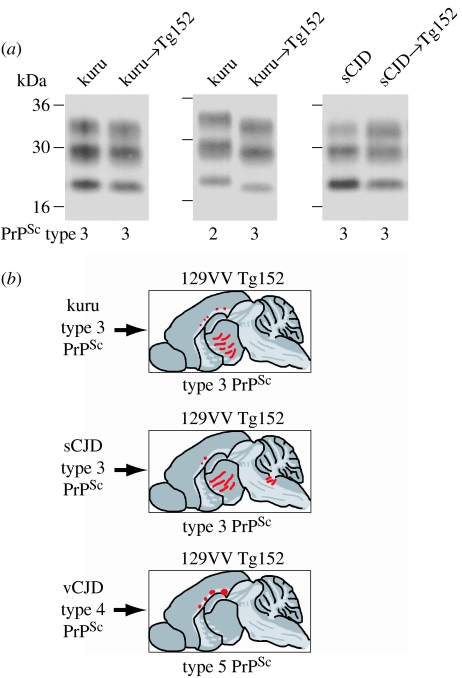Figure 4.
Summary of molecular and neuropathological phenotypes in transgenic mice. (a) Molecular strain typing of human prion transmissions to mice. Immunoblots of proteinase K-digested brain homogenates from human patients or transgenic mice analysed by enhanced chemiluminescence with anti-PrP monoclonal antibody 3F4. The provenance of each brain sample is designated above each lane and the type of human PrPSc detected in each sample (using the London classification of human PrPSc types; Collinge et al. 1996; Hill et al. 2003) is designated below. (b) Neuropathological analysis of transgenic mouse brain. An equivalent pattern of neuropathology is seen in 129VV Tg152 mice that propagate type 3 PrPSc following primary transmission of kuru prions or sporadic CJD prions, which is distinct from 129VV Tg152 mice that propagate type 5 PrPSc following primary transmission of vCJD prions. Sketches represent the regional distribution of abnormal PrP deposition in transgenic mouse brain visualized with anti-PrP monoclonal antibody ICSM 35; bars, diffuse synaptic PrP deposition and circles, PrP plaques.

